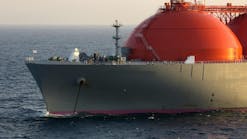Presidents Barack Obama of the US and Xi Jinping of China asserted international leadership in the politics of climate change by announcing on Nov. 12 new targets for cuts in their countries' emissions of greenhouse gases. In a joint statement after meetings in Beijing, the leaders said they "hope that by announcing these targets now, they can inject momentum into the global climate negotiations and inspire other countries to join in coming forward with ambitious actions as soon as possible, preferably by the first quarter of 2015." They thus joined European officials promising aggressive action in anticipation of a United Nations meeting next year on greenhouse-gas emission targets beyond 2020. They all claim to lead the effort. They all lose followers when costs become clear.
Xi said China would try to halt growth in emissions of carbon dioxide by 2030 and seek an energy-market share for nonfossil fuels of 20%. Obama said the US would lower its economy-wide emissions, presumably of CO2, below 2005 levels by 26-28% by 2025.
Estimating the costs
The costs of achieving Obama's goals can be estimated from data published by the US Energy Information Administration. According to EIA's October Monthly Energy Review, annual US emissions of CO2 peaked in 2005, the base year for the president's cuts, at 5.999 billion tonnes. The targeted cuts thus would lower 2025 emissions to 4.319-4.439 billion tonnes.
In its Annual Energy Outlook 2014, EIA projects CO2 emissions under a variety of assumptions, in only two sets of which do values fall below 5 billion tonnes in 2030, the nearest year to 2025 for which EIA published other relevant data.
In one of those cases, emissions in 2030 wouldn't be low enough to satisfy Obama's target range for 2025. That case assumes imposition of a fee on CO2 emissions in 2015, beginning at $10/tonne and rising 5%/year thereafter. It also asserts oil and gas resource development above base-case assumptions and consequently lower 2030 prices of natural gas: $4.25/MMbtu at Henry Hub in 2012 dollars vs. $6.03/MMbtu in the reference case. In this case, CO2 emissions in 2030 total 4.949 billion tonnes, and average electricity prices are 9% higher than 2012 levels and 3% higher than projected in the reference case.
In the scenario that better shows what's needed to fulfill Obama's pledge, EIA projects 2030 CO2 emissions of 4.001 billion tonnes. That case assumes a fee on CO2 emissions beginning at $25/tonne in 2015 and rising 5%/year. The effect on average electricity prices in 2030: 34% above 2012 levels and 26% above the reference-case forecast. Proportional adjustment to 2025 suggests price increases of 25% from the 2012 value and 19% from the base-case projection.
A timely question is whether Americans would volunteer to pay one-fifth more for electricity than otherwise might be necessary 15 years from now so CO2 emissions can be one-fourth lower. The answer is almost certainly that they would not. Climate change was a dormant issue in this month's congressional elections. A high-dollar effort to make it pivotal to outcomes, by hedge fund billionaire Tom Steyer, flopped. Republicans doubtful of the need for expensive precautions against global warming won elections. Democrats with contrary views lost.
Hopeless promises
Yet none of that kept Obama from making hopeless promises in service to his own sense of personal righteousness. He thus dares Mitch McConnell, the Kentucky Republican who will become Senate majority leader, to challenge his climate activism. Reaction against the administration's regulatory assault on coal helped McConnell win reelection by an expectedly large margin. With his climate pledge in Beijing, Obama is as much as saying he cares little about McConnell, or about Congress, or about his party's trouncing in the election.
Americans in persuasive numbers have shown they don't share their president's trepidation about climate change. They would balk at costs promised by his grandstanding in China. They need Congress to remind a haughty president that even he must answer to the people.
